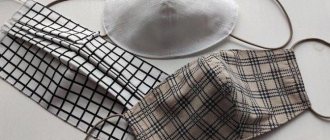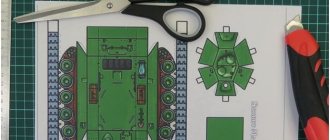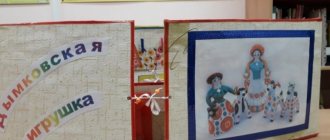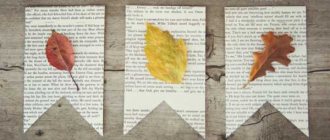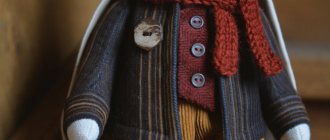Necessary materials
First of all, you need to decide what you plan to make a photo box for product photography from, what will be the basis, the frame. There are a lot of options here, depending on the photographer’s imagination. We offer the three most common options: wooden slats, plastic pipes, cardboard box. Below we will tell you how to make the frame of a future lightcube from these materials.
In addition to the frame materials, to create a photo box for product photography you will need:
- White, relatively transparent fabric;
- A sheet of thick paper, with a density of about 200 g/m2;
- The light source can be table lamps, or you can make them yourself, for which you need to purchase foil, an electrical cord, a switch, diode lamps, lamp sockets, a plug, and electrical tape.
If you have all the listed tools, making a lightcube for object photography with your own hands will take no more than one hour.
LED Location
I would like to immediately note that you should not choose large LEDs, as they will block each other and the distant rows will be difficult to see. Also, do not use very bright diodes. So that the light of each diode is point-like.
For the project we will use not very bright 3mm diffuse LEDs with long legs.
For a better view of each LED, we will use very thin connecting wires.
The LEDs will be connected to each other using their legs. Cathodes with cathodes, anodes with anodes. For our cube we will need 8 such matrices.
Step by step process
Let's look at the step-by-step process of making a photo box for product photography with your own hands.
Frame
Previously, we looked at three types of materials for creating a photo box body for product photography with your own hands. Let's look at how to create a frame from each type:
- Wooden slats. To ensure that the photo box does not turn out to be heavy, slats should be used with a thickness of about 10 by 5 mm. To fasten them, it is better to use “postal” nails 10 mm long. It is necessary to fasten the slats with nails to obtain a photo box with each side measuring 1 meter;
- Plastic pipes. Sold in plumbing stores. The plastic must be fastened together with special corners. To fix the pipes in the corners, their ends must be heated over the fire of a gas stove, but not to the point of melting. After warming up, you need to quickly connect the angle and pipe and keep them fixed for at least 30 seconds. Thus, we connect all the pipes and corners, we get a cube with the same side size of 1 meter;
- Box. The simplest, but not the worst way. Find a cardboard box that is close to a cubic meter in size. Using a stationery knife, cut out the sides of the box, leaving 3 cm from each side. You will get sides with “windows” through which light will pass through the fabric. There is no need to cut out the bottom of the box.
This is what three options for making a frame for a photo box for product photography with your own hands look like. Then we move on to the next step - upholstery with fabric.
Fabric walls
The fabric serves not just as walls, it is designed to diffuse light. It is diffused light that is the purpose of using a photobox for product photography. The ideal result of its use is the absence of any shadows from the subject.
We use a white sheet as fabric, the main thing is that it is not dense. We cut the pieces and attach the fabric to the frame with a slight tension; the fabric should not sag. In the case of a wooden case or box, you can use a construction stapler and attach the material with staples. When using a frame made of pipes, it is better to attach the fabric using double-sided tape from the inside and nails from the outside.
The fabric should be covered on all sides except the front. The front of the cube will be used for product photography, and you will work through it. Naturally, you shouldn’t touch the bottom either.
Light
Light is a very important component of a photobox for product photography. The more light used, the better. It is better to aim at three sources that will be located on top and on the sides. This arrangement will allow you to avoid shadows (if desired), and three sources will provide sufficient light flux so as not to use a tripod and not to increase the ISO. When working with a photobox, light sensitivity should not be set above the minimum, so as not to harm the quality, because the conditions allow it.
As we have already said, table lamps can be used as light for product photography. It is important to change the bulbs in them, it is better to use the same ones, so as not to have to worry about the white balance settings in the process. Low lamps are suitable on the sides; they need to be directed exactly at the wall, to illuminate the center of the cube. To direct light from above, it is convenient to use a lamp with a leg that is attached to the tabletop. As a rule, such lamps are tall and securely fixed; they can be easily directed to illuminate the photobox through the “ceiling”.
If you decide to make the light yourself, then it is not difficult. To fix the lamps, you will need an electrical rigid cable with a copper or aluminum core that can hold its shape. From this cable, make stands for cartridges, including on top. Connect all cartridges with soft cables connected to one plug. Install a “key” (switch) on each cable; for convenience, you can use the option that regulates the light flux. Make wide “balls” from cardboard that will be used as reflectors. Place foil on the inside of the bags. Attach the resulting structure to the cartridge. Thus, we get an imitation of table lamps for less money.
Second method: wooden photo backdrop tinted with acrylic paints
In the second method we also brush the boards, but for this photo backdrop we will use acrylic paints and the dry brush method.
On one side we cover the boards with black acrylic paint, slightly diluted with water for a smoother and more uniform application.
When the paint has dried, put white paint on the brush (for example, “Acrylic Hobby”), remove the excess on paper or a napkin and begin to whiten the boards with light, touching movements. In no case do we dilute the paint with water and always remove the excess - we don’t want to completely cover the black color, we need it to show through in the recesses of the wood fibers.
I decided not to knock together this photo backdrop, but to leave the three boards separately so that, if desired, I could build a corner out of them, or put them on top of each other.
The back side of the boards should not disappear! Let's make another background.
We cover the back side of the boards with “Acrylic-Hobby De Luxe” paint, Indigo color, heavily diluted with water.
Immediately after application, wipe off the applied paint with a napkin or rag.
Mix on a palette (or plastic plate) the Lilac and White colors of Acrylic-Art paints. Dilute strongly with water. And apply a second layer to our boards.
And again we wipe off all the paint that has not yet been absorbed into the wood with a napkin or rag.
Use sandpaper to remove the color from the top layers of wood.
It turns out to be an interesting color transition. But I want something lighter. We work again with a dry brush: we take white paint, erase the excess and begin to create a relief.
It turns out a very delicate light background.



